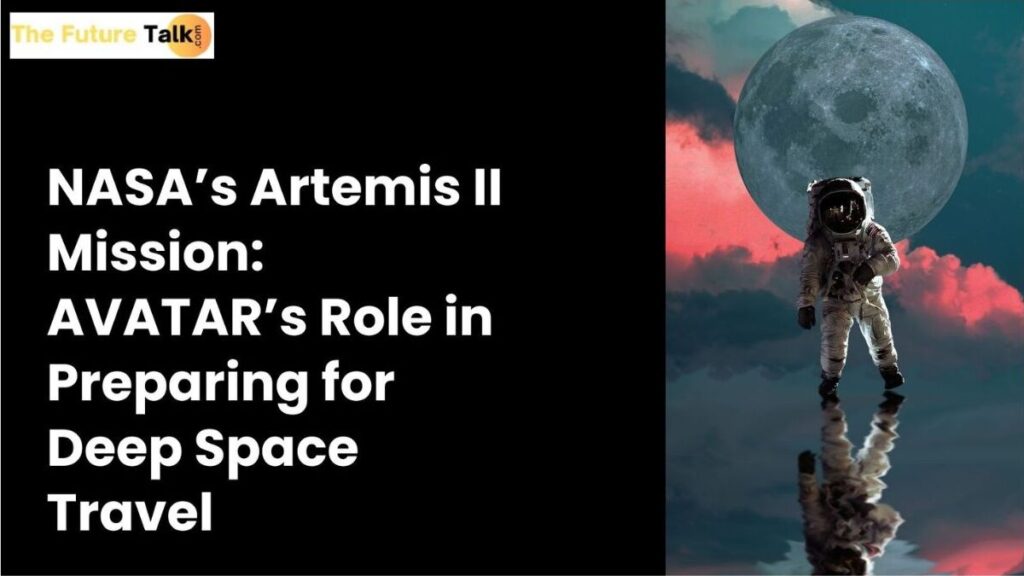
NASA is taking a bold step forward in space medicine with its upcoming Artemis II mission. For the first time, human tissue models, organ chips, will be sent to space to study how deep space radiation and microgravity affect human health.
This groundbreaking experiment, called AVATAR (A Virtual Astronaut Tissue Analog Response), is designed to prepare astronauts for longer journeys beyond Earth’s protective atmosphere. By studying these “avatars,” scientists hope to learn how to protect astronauts better and provide personalized medical care on missions to the Moon, Mars, and beyond.
Organ Chips To Imitate Human Biology in Space
Organ chips, or tissue chips, are small devices about the size of a USB drive that simulate the behavior of human organs. They contain living cells that mimic the structure and function of specific organs such as the bone marrow, lungs, heart, and liver. These chips can “breathe,” “beat,” and “process” substances like actual organs do.
The purpose of these chips is to predict how the body will respond to various challenges, such as radiation or medications. Linking multiple chips together helps scientists understand how different organs interact. Today, doctors use tissue chips to test cancer treatments or study how patients’ bodies might react to different drugs. NASA’s AVATAR project is taking this technology into space to study the unique effects of space travel on human health.
Bone Marrow: A Key Focus
For Artemis II, NASA will use organ chips built using blood-forming stem and progenitor cells, which originate in the bone marrow, from the crew members. Bone marrow is especially important because it produces red and white blood cells, which are crucial to the immune system. It is also highly sensitive to radiation, which poses a significant risk in deep space.
The bone marrow chips will allow researchers to study how space radiation and weightlessness together affect blood cell formation. This research could help scientists create better ways to shield astronauts or develop treatments to prevent bone loss and immune system issues.
How the Chips Are Prepared
Before the mission, astronauts will donate platelets to local healthcare facilities. These samples contain a small number of stem and progenitor cells from their bone marrow. Scientists will isolate these cells and grow them inside the chips alongside supporting cells and blood vessel cells. This process creates a realistic model of the astronaut’s bone marrow, enabling researchers to observe how space conditions affect these critical cells.
Why This Matters
The data gathered by AVATAR will not only help future space missions but also advance medical research on Earth. By studying how radiation affects bone marrow, scientists can gain a deeper understanding of diseases such as cancer and the side effects of chemotherapy. The research could lead to new treatments and ways to protect vulnerable organs.
NASA’s Biological and Physical Sciences Division emphasizes that having this information before astronauts travel is essential. Missions into deep space will have limited access to real-time medical care, so understanding each astronaut’s unique risks will allow mission planners to pack the right medical supplies tailored to their needs.
The Experiment in Space
The organ chips will be secured inside a specially designed payload developed by Space Tango. This device will keep the chips alive by providing controlled temperatures, nutrients, and fluids throughout the 10-day mission around the Moon.
Once the mission ends and the chips return to Earth, researchers at Emulate, Inc. will study how spaceflight affected the cells. Using single-cell RNA sequencing, they will examine how thousands of genes within individual cells changed during the mission. These results will be compared to samples from astronauts on Earth to understand the precise effects of deep space radiation and microgravity.
NASA’s AVATAR experiment represents a significant leap toward safe, personalized space travel. By studying organ chips that mimic human tissues, scientists can better understand how deep space affects health and design targeted interventions for astronauts. These insights will be crucial as humanity prepares for longer and more ambitious missions beyond Earth.
As NASA advances its exploration efforts, the knowledge gained from AVATAR will serve as a foundation for safer space missions and groundbreaking medical discoveries.
- Artemis II: Developed on the success of the uncrewed Artemis I in 2022, Artemis II is a crewed mission to explore the moon.
- AVATAR: A Virtual Astronaut Tissue Analog Response (AVATAR) is an experiment that will use organ-on-a-chip devices, or organ chips, to study the effects of increased radiation and microgravity on human health.
Stay tuned to The Future Talk for more such interesting stories. Comment your thoughts and join the conversation.